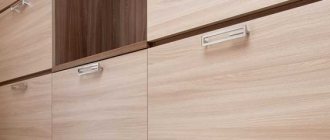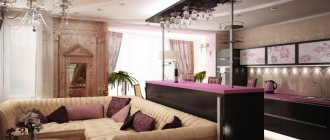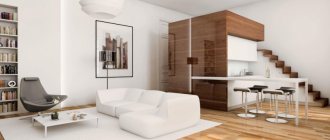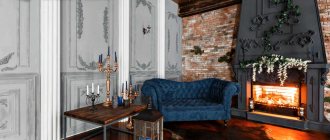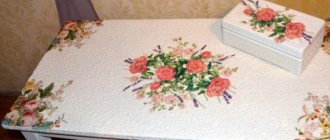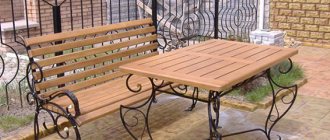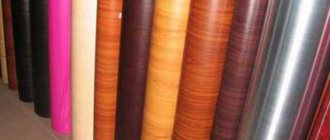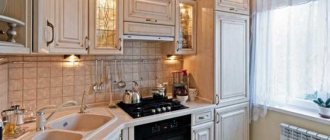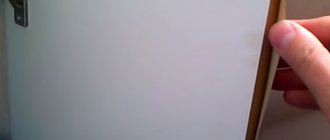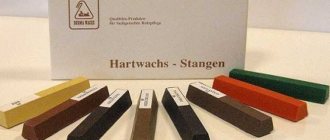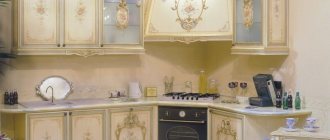Principles of classification
Taking into account the wide range of types and equally universal application possibilities, self-adhesive films are classified according to several criteria, which are worth paying attention to when purchasing this material.
These include:
- structure;
- base material;
- surface type;
- appointment;
- decorative design.
Important! The price of self-adhesive film is very affordable, so anyone can afford to purchase it, regardless of their financial profitability. Deviations in cost will be insignificant for different types; to a greater extent they are regulated by brand awareness - class=”aligncenter” width=”720″ height=”480″[/img]
Converting Glass Products
Glass surfaces in the house sometimes most often need modifications and decorations, since transparent glass, for example, is not practical and not always beautiful. But armed with self-adhesive film, you can quickly turn nondescript glass into stunning stained glass. This material transmits light well, but is resistant to ultraviolet rays. Therefore, this decor option is suitable even for windows.
Self- adhesive film for doors
Thanks to the self-adhesive film, which creates the impression of a pattern being applied by sandblasting, its glass surfaces pasted over will acquire a noble appearance. Glass on which the pattern is actually applied is quite expensive, but by using film you can save your budget and get a chic interior. In addition, the film prevents fragments from flying away when the glass is damaged.
Types of film based on material
All materials in this category are combined compositions. The main substance used is:
- polyester;
- polyvinyl chloride;
- propylene.
Important! In addition to the main substances, the optimal combination of plasticizers, stabilizers, and pigments is selected. Paper, natural and synthetic fabrics are also often used.
Types of self-adhesive film by structure
Depending on the structure of the fabric, self-adhesive films are distinguished:
- Single layer. This material is made from multicomponent mixtures that include PVC resin and various plasticizers. Stabilizers and pigments are also used as additional substances to impart strength and the desired surface design. All substances are mixed into a homogeneous mass, after which it is formed into a film by extrusion or heat treatment with hot rollers. The rigidity of the film and its physicochemical properties directly depend on the type of plasticizers added.
- Double layer. To produce 2-layer coatings, 2 separate canvases are made - a base and a cover. For the base, fabric or paper is most often used, and for the covering layer, polyvinyl chloride resin of various combinations of substances is used. For manufacturing, methods of calender molding, alluvial, extrusion, and even caching are used. As a result of the work done, more plastic sheets are obtained, which makes their application more convenient, but their technical characteristics are somewhat lower than those of a single-layer film.
Important! Considering these structural features, before buying a self-adhesive film, be sure to clearly define its intended use. The duration of its operation depends on the correct choice.
Adhesives
The production of adhesives is the know-how of manufacturers of self-adhesive materials. In the production of such materials, glue based on rubber, silicone or acrylic is most often used. The range of large manufacturers includes several dozen different adhesives. Adhesives are divided into permanent and removable.
Permanent adhesives are characterized by high adhesive strength - removing a sticker with permanent adhesive leads to its destruction.
Removable adhesives are used in cases where it is necessary to remove the sticker without leaving traces, and in some cases, intact - for reuse. These can be price tags or instructions on household appliances, stickers on cars, advertising stickers, etc. An important quality characteristic of removable adhesives is the ability to remove the sticker without residual traces of glue.
In addition to permanent and removable adhesives, during mass labeling it is technologically advisable to use adhesives that make it possible to remove and re-stick incorrectly pasted labels. Such adhesives allow you to easily remove the label over a fairly long period of time (up to a day) and provide reliable permanent adhesion of labels for several days.
For mass-produced materials, there are universal adhesives suitable for many applications. In addition to universal adhesives, special adhesives have been developed for various applications and operating conditions of stickers.
Rubber-based adhesives are made using either a natural or man-made product. With the help of additives, it becomes sticky when mixed with other chemicals. This production technology was the very first to be invented and at the same time turned out to be very economical and efficient. In addition, rubber-based adhesive is resistant to temperature and ultraviolet radiation.
Acrylic-based adhesive systems are compounds of acrylate monomers with other compounds that are used for adhesive structures. It is known that when the production technology of acrylic glue changes, its chemical properties also change. Packaging materials based on acrylic adhesive are particularly durable in use and adhere perfectly to any surface. However, they initially stick worse than rubber glue. However, acrylic glue is more independent of temperatures, so it is used when it is necessary to create a durable connection.
The silicone-based adhesive system is created on the basis of inorganic compounds together with organic additives. It is this mixture that gives the compound its individual characteristics, for example, the possibility of long-term operation. Packaging materials based on silicone adhesive easily adhere to surfaces that have low and capacious static. This is what determines the high price of the product.
In general, the use of adhesive systems is possible in various temperature ranges: from –35 to 260 °C. In addition, all systems have unique “adhesion-cohesion” and “viscosity-elasticity” qualities, depending on the purpose of the desired material. Packaging tape (adhesive tape) is distinguished by the presence of a very important and unique characteristic - adhesion.
What it is?
Adhesion (from Latin adhaesio - sticking) in physics is the adhesion of the surfaces of dissimilar solids and/or liquids. Adhesion is caused by intermolecular interaction in the surface layer and is characterized by the specific work required to separate the surfaces. In some cases, adhesion may be stronger than cohesion, that is, adhesion within a homogeneous material - in such cases, when a breaking force is applied, a cohesive rupture occurs, that is, a rupture in the volume of the less strong of the contacting materials.
To measure the level of adhesion in a particular material, use the peel test according to the ASTM or PSTC method. Peeling during this test must be done either at a right angle or at an angle of 180°. Based on the test results, we can conclude how strongly the material adheres to the required substrate. Initially, adhesion is checked a few seconds after gluing. The test is then repeated 3 days (72 hours) after rejoining the materials.
Cohesion indicates the internal strength of the adhesive layer. In this case, the measurement is carried out using a “shear” test according to the same principle as for adhesion. It is known that there is a relationship between the two processes: the lower the cohesive force, the lower the resistance and backlash of the self-adhesive material.
By surface type
The attractiveness of the designed surface and its appropriate combination with other interior or exterior items directly depend on the quality and type of surface. Based on this principle, the following types are distinguished:
- glossy - suitable for darkened rooms;
- matte - fits perfectly into the interior of a room with good lighting;
- mirror - appropriate in any room, including small ones;
- transparent - used primarily for finishing glass surfaces;
- holographic - suitable for any surface to create an original effect.
Important! Depending on the correct choice of surface type, the effectiveness of the result in the decoration process depends entirely. Therefore, follow the recommendations of experts so that your design idea in theory fully corresponds to the idea embodied in reality.
Decorative options
The modern market provides an incredibly wide range of self-adhesive sheets for finishing different surfaces. Almost every manufacturer offers up to 1000 items, colors and texture options. This allows you to select the right coating to solve a specific problem as accurately as possible.
Conventionally, all self-adhesive films are divided into 2 versions.
Standard - present in a single-color version of a wide range of color palettes, and also includes the following types of imitation:
- valuable wood veneer;
- natural and processed stone;
- ceramic tile;
- canvas;
- textile;
- tapestry;
- children's stories. Important! Self-adhesive film can be either monochromatic or consist of the most advantageous combination of shades.
Materials of the category of special purpose or “special execution” are presented in the form of coatings:
- under velor;
- imitation cork fabric;
- metallic, gold, silver;
- thickened films for furniture, tabletops, window sills. Important! In this group, we can separately distinguish a special material for drawing, which allows you to repeatedly apply drawings and remove them while maintaining the integrity of the surface.
Application of self-adhesive film
This material is widely used to create a variety of advertising, both indoor and outdoor. In construction and design, the use of self-adhesive film is even wider. It covers literally all directions and allows the finishing of almost any item.
The most common ways to use it are:
- Self-adhesive film for the bathroom. Here it becomes suitable for wall decoration, since the material is moisture resistant and perfectly prevents the formation of mold. Moreover, if you use a mirror canvas, it will help to visually expand the space, while a holographic one will bring extraordinary originality.
- Self-adhesive film for furniture. In this regard, the scope for imagination is inexhaustible. Using such a coating, you can add solidity to the room by decorating it with natural wood or stone. For a more modern style direction, a film with fabric imitation is suitable. A velor-look film will bring a special coziness, while a gold, silver or metallic film will fit perfectly into high-tech. At the same time, you can choose a color that completely matches the natural texture of the material of the new furniture, or restore the former attractiveness of the dilapidated one by restoring it.
- Film for work surfaces in the kitchen or office. Constant load and contact with sharp objects can lead to rapid failure of the main surface. By tightening it with film, it will be possible to avoid rapid damage, which is its undeniable advantage.
- Film for children's room. This material can be used to create decorative wall coverings with thematic designs, which can be changed from time to time to suit the child’s new hobbies. In addition, a special “blackboard” film will allow you not to limit the child in his desire to draw everywhere without damaging the interior.
- Film for doors. In this direction of use, certain benefits can also be noted. The coating will not only protect the door leaf itself from scratches and cracks. It will provide additional protection from moisture, which is especially important for wooden doors, and accordingly will prevent their deformation. At the same time, it is possible to accurately select a shade that will perfectly match the rest of the color scheme of the room.
- Self-adhesive film for windows. This coating is mainly used to protect against direct exposure to bright sunlight in a room. Most often, canvases of varying degrees of toning are selected for this purpose. The film is also practically used to protect window sills from crumbling paint or other finishing, and accordingly, the risk of the need for frequent restoration is reduced, and as a result, additional costs are reduced.
- Film for glass surfaces. Decorating with such material will give them greater impact resistance and, accordingly, protect them from chipping or complete destruction. For door inserts and countertops, use stained glass self-adhesive film. Such a canvas can be used either in separate fragments to create unusually attractive patterns on the surface according to an individual project, or completely decorate the surface with multi-colored stained glass, which is very popular today among connoisseurs of fashion trends.
Important! Photos of interior design with self-adhesive film will help you visualize all the possibilities for using this universal PVC material.
Application benefits
The use of self-adhesive products has many advantages:
- Counter coverings made before exposure to high temperatures, therefore can be used in different rooms, which makes it possible to update kitchen furniture;
- in the process of their production, only safe components are used, so such products do not harm people, which allows them to be used for children's furniture;
- They are available in different colors, so you can choose white glossy film, black or some other;
- it is allowed to buy material by the cut, so you will receive as much product as needed to complete a specific task;
- the painter performing the process should not have specific skills, so a novice painter can cope with updating any item;
- The material can be used to decorate a nursery, for which self-adhesive paper with a pattern depicting various cartoon characters is used;
- if the work is carried out in a small room, then the ideal choice would be a mirror film, which helps to visually increase the space;
- the resulting coating protects the base from various negative influences;
- does not require specific care;
- the adhesive layer does not require the use of additional adhesives, so reliable and perfect adhesion is guaranteed in any case;
- ensures the durability of the resulting coating.
Some manufacturers offer films for furniture that have a truly unique and inimitable appearance, and their photos are located below. The disadvantages of using this material include the fact that before updating any item, you should carefully prepare it before this work, since any distortions, contamination or other problems are not allowed.
If you need to update an old massive set, then material with wenge colors is perfect.
Parameters of self-adhesive film
Self-adhesive PVC film is supplied to the market not only in a wide range of decorative designs. The release form deserves no less attention regarding the practicality of its use. Basically, such film is sold in rolls 15 meters long, and the width can vary. This allows you to choose the material in such a way that it can be used as practically as possible without waste. For example:
- for walls, doors and other large surfaces, rolls with a width of 900 mm are suitable;
- when restoring furniture or creating a protective coating for it, purchase material 450 or 675 mm wide;
- When finishing small surfaces or to create single decorative elements, manufacturers offer modifications to rolls with a width of 53 and 106 mm.
How to glue self-adhesive film?
Naturally, when considering the possibilities of using such a material, it would not be amiss to note the fact that applying it to any surface is extremely simple. For such work you will not need to involve specialists, so you can fully surrender to the flow of your artistic thoughts.
To apply the film, do the following:
- Prepare the surface by cleaning it from dust, dirt, and grease.
- Cut the material into strips or shaped elements of the desired size.
- Remove the bottom protective layer one by one and carefully roll the film over the surface, pulling lightly.
Important! Watch the video below to clearly understand how to properly glue self-adhesive film.
To ensure a high-quality result, also read some recommendations for each process:
- To degrease and remove surface contaminants, use a solution of water and dishwashing detergent when treating glass surfaces.
- If you are decorating wooden surfaces without varnish, prime the base before applying the film.
- When gluing the film, carefully smooth the surface to prevent the formation of blisters with air inside.
- When decorating walls, additionally use wallpaper glue to increase adhesion and permanently fix the self-adhesive film.
- If there is a need to paste round corners, preheat the canvas with a hairdryer to make it more flexible.
How to stick film on furniture
If the base is small, then the material is glued directly to a dry surface. If the area is already larger in size, then it needs to be slightly wetted with soap and water or just water.
This is done so that if the film lies unevenly, it can be leveled.
When gluing, it is better to remove moving furniture elements (cabinet doors). Gluing always starts from the top. To begin, remove the protective layer from the film by 10 centimeters and apply it to the surface with the sticky side.
Align and level the film well with a rag, moving it from the center to the edges, thus removing air bubbles.
The rest of the film is just hanging there. And then again remove the protective layer by 10 centimeters and carry out the same actions until the entire film is glued.
If there are still bubbles somewhere, take a thin needle and pierce them, iron this part with a rag. Blow on the folds with a hairdryer and smooth out well.
Also, with a hairdryer they go over seams and corners. Once all the gluing is completed, the elements that were removed can be returned to their place.
